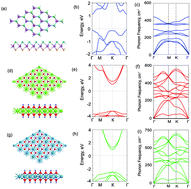van der Waals heterostructures can be effectively used to enhance the electronic and optical properties and extend the application range of two-dimensional materials. Here, we construct for the first time MoSeTe/X(OH)2 (X = Ca, Mg) heterostructures and investigate their electronic and optical properties as well as the relative orientation of these layers with respect to each other and the effects of an electric field. Our results show that in the MoSeTe/X(OH)2 heterostructures, the Janus MoSeTe monolayer is bonded to the X(OH)2 layer via weak van der Waals forces. Owing to different kinds of chalcogen Se and Te atoms in both sides of Janus MoSeTe, there exist two main stacking types of the MoSeTe/X(OH)2 heterostructures, that are MoSeTe-Se/X(OH)2 and MoSeTe-Te/X(OH)2 heterostructures. Interestingly, the Se- and Te-interface can induce straddling type-II and type-I band alignments. The MoSeTe-Se/X(OH)2 heterostructure exhibits a type-II band alignment, thus endowing it with a potential ability to separate photogenerated electrons and holes. Whereas, the MoSeTe-Te/Ca(OH)2 heterostructure displays a type-I band alignment, which may result in an ultrafast recombination between electrons and holes, making the MoSeTe-Te/Ca(OH)2 heterostructure a suitable material for optoelectronic applications. The MoSeTe/X(OH)2 heterostructures show an isotropic behavior in the low energy region while an anisotropic behaviour in the high photon energy region. The dielectric function of the MoSeTe-Te/Ca(OH)2 heterostructure is high at low photon energy relative to other heterostructures verifying it to have a good optical absorption. Furthermore, the band gap values and band alignment of the MoSeTe/X(OH)2 heterostructures can be modulated by applying an electric field, which induces semiconductor-to-metal and type-I(II) to type-II(I) band alignment. These results demonstrate that the MoSeTe/X(OH)2 heterostructures are promising candidates for optoelectronic and photovoltaic nanodevices.


